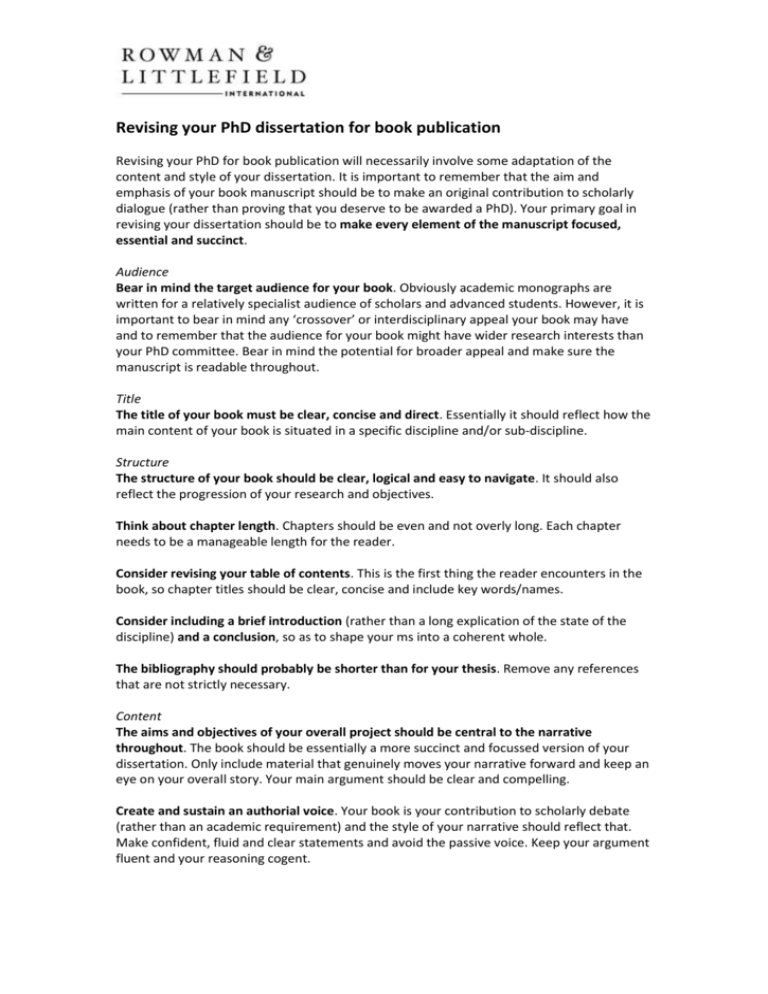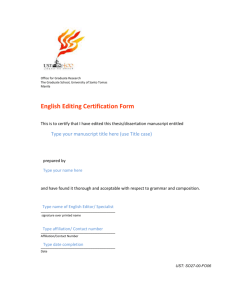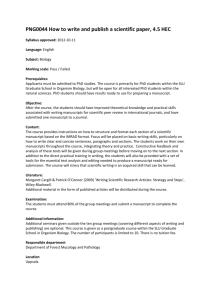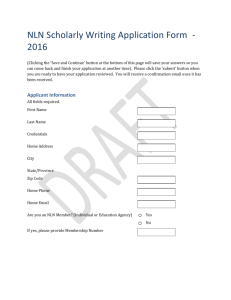Author Guidelines: Revising your PhD dissertation for book publication
advertisement

Revising your PhD dissertation for book publication Revising your PhD for book publication will necessarily involve some adaptation of the content and style of your dissertation. It is important to remember that the aim and emphasis of your book manuscript should be to make an original contribution to scholarly dialogue (rather than proving that you deserve to be awarded a PhD). Your primary goal in revising your dissertation should be to make every element of the manuscript focused, essential and succinct. Audience Bear in mind the target audience for your book. Obviously academic monographs are written for a relatively specialist audience of scholars and advanced students. However, it is important to bear in mind any ‘crossover’ or interdisciplinary appeal your book may have and to remember that the audience for your book might have wider research interests than your PhD committee. Bear in mind the potential for broader appeal and make sure the manuscript is readable throughout. Title The title of your book must be clear, concise and direct. Essentially it should reflect how the main content of your book is situated in a specific discipline and/or sub-discipline. Structure The structure of your book should be clear, logical and easy to navigate. It should also reflect the progression of your research and objectives. Think about chapter length. Chapters should be even and not overly long. Each chapter needs to be a manageable length for the reader. Consider revising your table of contents. This is the first thing the reader encounters in the book, so chapter titles should be clear, concise and include key words/names. Consider including a brief introduction (rather than a long explication of the state of the discipline) and a conclusion, so as to shape your ms into a coherent whole. The bibliography should probably be shorter than for your thesis. Remove any references that are not strictly necessary. Content The aims and objectives of your overall project should be central to the narrative throughout. The book should be essentially a more succinct and focussed version of your dissertation. Only include material that genuinely moves your narrative forward and keep an eye on your overall story. Your main argument should be clear and compelling. Create and sustain an authorial voice. Your book is your contribution to scholarly debate (rather than an academic requirement) and the style of your narrative should reflect that. Make confident, fluid and clear statements and avoid the passive voice. Keep your argument fluent and your reasoning cogent. Remove unessential scholarly materials that will clearly identify your manuscript as a PhD thesis, such as chapters on methodology and literature review. Overviews of secondary material and your theoretical approach should be integrated into the main text where they are necessary. Avoid repetitive material. Remove lengthy and unnecessary notes – a lower level of annotation is expected in books than in a thesis, so make sure you tame runaway notes. Too many notes can compromise the readability of your book. Remove lengthy and unnecessary quotations – quote judiciously and make sure all examples keep the book moving forward. Limit unnecessary jargon or include explanations where necessary for a non-specialist audience. Refer to ‘this book’ rather than ‘this thesis’. Feedback To ensure that your final manuscript is suitable for your target audience, we would encourage you to share sample chapters with your colleagues for feedback on content, presentation and style prior to submission.







